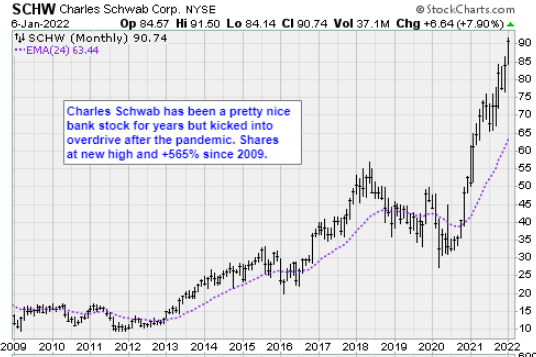The S&P 500 (SPX) started higher on Thursday as bargain hunters swooped in to buy beaten-down technology stocks. Unfortunately, sellers showed up at exactly 4,720, the 20-day moving average, asserts Jon Markman, tech sector expert and editor of Strategic Advantage.
The result was an immediate decline to our critical support level at 4,670 and a lot of panic selling in the bull camp. The good news is the rest of the session featured a nice bounce and a close at 4,696, a loss of only 0.1%.
Bulls still need to push the benchmark S&P 500 beyond 4,720 to force bears to abandon negative bets. The longer the index remains below that level the more likely it is critical support at 4,670 will fail. However, big capitalization technology stocks are deeply oversold, and they could get a huge retracement bounce soon. That is the best-case scenario for bulls in the near term.
Details
The Dow fell 0.5% to 36,236 and the tech-heavy Nasdaq dropped 0.1%. Energy and financials fared best, while materials and healthcare lagged among the sectors.

Breadth was even, and there were 822 new lows vs. 145 new highs. Big caps on the new high list included ExxonMobil (XOM), PepsiCo (PEP), Chevron (CVX), Wells Fargo (WFC), and Charles Schwab (SCHW). It’s champagne for the cyclicals crowd this year, so far.
The environment is beginning to remind me of 2000-2003, when the dot-com bloated Nasdaq 100 fell 80% while long-ignored small-cap energy, regional bank, and staples fared fine. Month after month we waited for tech to come back; little did we realize then it would take almost 10 years.
The 10-year US Treasury yield rose three basis points Thursday to 1.73%, its highest level since March. West Texas Intermediate crude oil surged 2.1% to $79.49 per barrel.
Minutes from the Federal Open Market Committee's December meeting, released Wednesday, showed some Fed policymakers supported earlier Fed fund rate hikes and some favored faster reductions in the Fed's securities holdings.
In economic news, the Institute for Supply Management's US services index fell to 62 in December from a record 69.1 in November, compared with expectations for a drop to 67.
“Overall, the survey is still strong, significantly better than the pre-Covid trend,” Pantheon Macroeconomics chief economist Ian Shepherdson said in a note. “But we are braced for a temporary softening due to Omicron, which likely will depress demand in the services sector for a few weeks, while at the same time disrupting activity via increased employee absenteeism.”
Challenger, Gray & Christmas reported 19,052 layoff intentions in December, up from a 28-year low of 14,875 in November but well below the 77,030 layoffs reported in December 2020. Firms continue to struggle to retain and hire workers, so layoffs are expected to remain low.


















